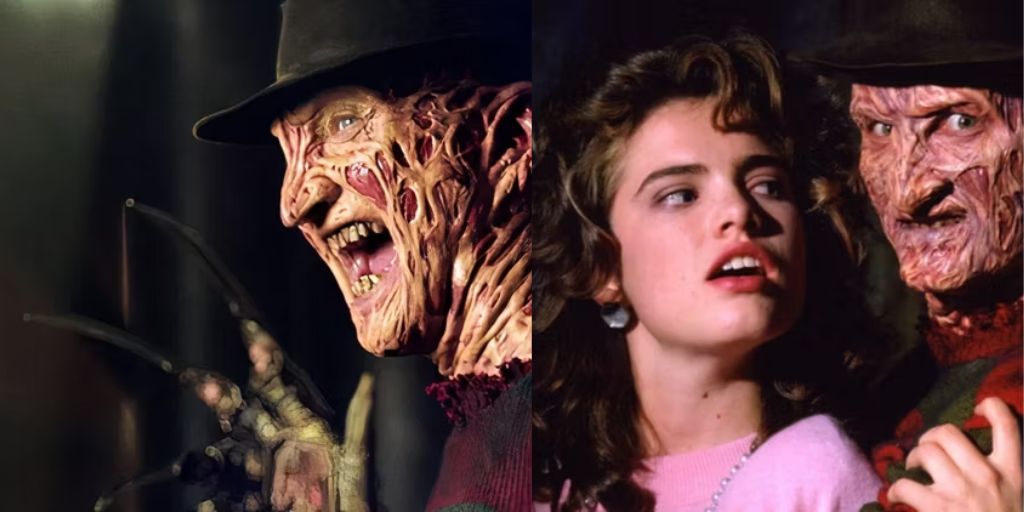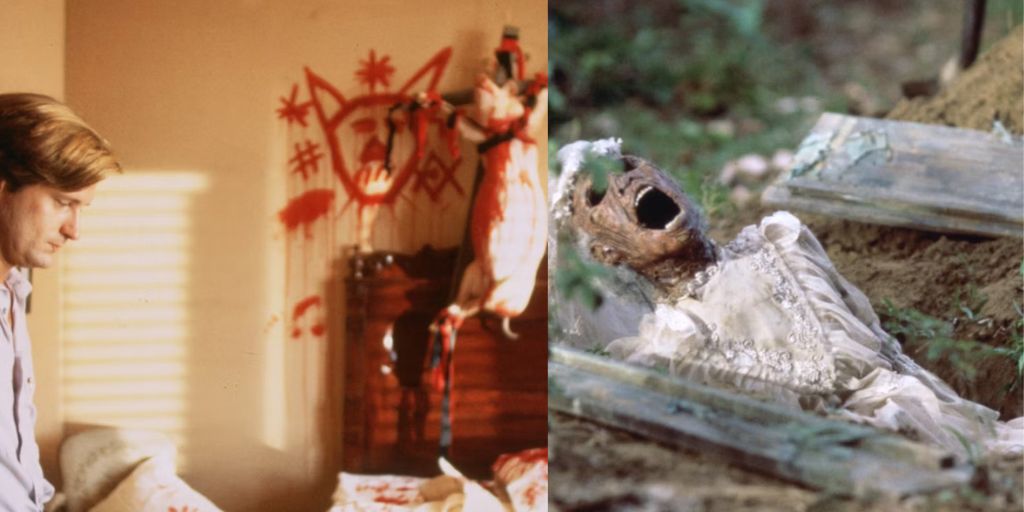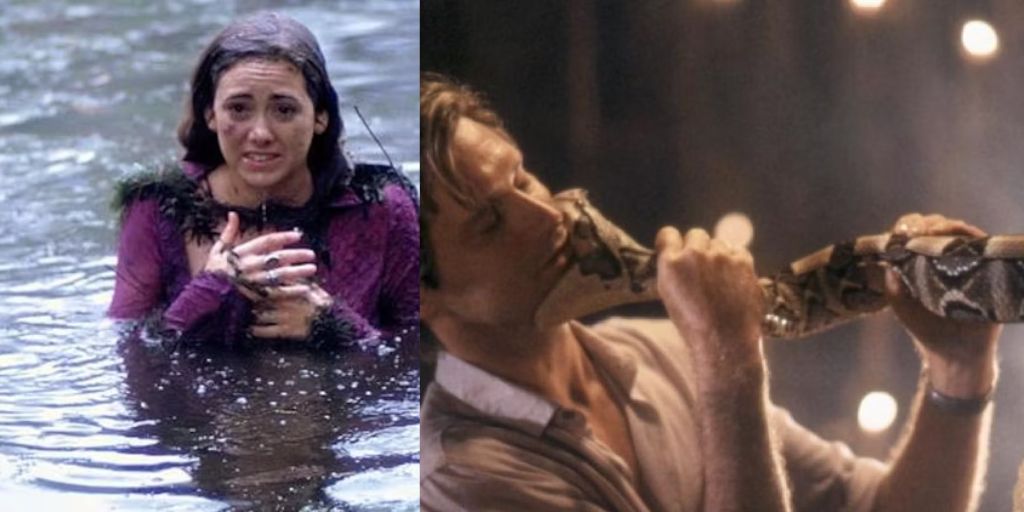Wes Craven is known for creating some of the most influential horror films in cinema history. His innovative approach has shaped the genre significantly. Craven is best remembered for pioneering subversive horror franchises like A Nightmare on Elm Street and Scream.
These films broke the mold of traditional horror by mixing humor and meta-commentary with classic teen horror elements. Craven’s earlier works, such as Last House on the Left and The Hills Have Eyes, tackled explicit terror and show deep human fears and social issues like class conflict and family dynamics.
Throughout his career, Craven examined horror from various angles, often taking unique approaches compared to his peers. One of his standout projects, however, is often overlooked in discussions about his career: show deep human fears and social issues like class conflict and family dynamics.
Throughout his career, Craven examined horror from various angles, often taking unique approaches compared to his peers. One of his standout projects, however, is often overlooked shows deep human fears and social issues like class conflict and family dynamics.
Throughout his career, Craven examined horror from The Serpent and the Rainbow. This film offers a distinctive take on the zombie genre, which has been both praised and criticized.
The Evolution of Zombie Films
Zombie movies have experienced various phases of popularity throughout film history. The 1930s and 1960s were particularly notable periods for zombie cinema. By the 2000s, the zombie film genre had become saturated, with a standard template dominating the genre.
Typically, these films depicted zombies as a result of illness or government experiments, portraying them as fast-moving, aggressive creatures that could only be killed by a headshot and spread infection through bites.
Popular examples include Resident Evil, 28 Days Later, The Crazies, and World War Z. These movies defined the 21st-century zombie narrative and shaped modern viewers’ perceptions of zombies.

In contrast, The Serpent and the Rainbow offers a refreshing deviation from this formula. It returns to the roots of zombie lore, drawing on Haitian voodoo practices rather than the contemporary tropes seen in many zombie films. This film stands out due to its adherence to the traditional elements of the zombie mythos.
Wes Craven’s Unique Approach to Horror
Wes Craven’s career is marked by his ability to transform familiar horror tropes into something new and unsettling. Two of his most famous films, A Nightmare on Elm Street and Scream, revolutionized the slasher genre.
Slashers were highly popular in the 1980s, with iconic characters like Michael Myers from Halloween and Jason Voorhees from Friday the 13th. By 1984, audiences were growing tired of the repetitive formula.
A Nightmare on Elm Street offered a fresh take by introducing Freddy Krueger, a villain who was both menacing and talkative, contrasting sharply with the silent, hulking killers of previous slasher films.
In 1996, the slasher genre seemed to be fading, but Craven revived it with Scream. This film was not only scary but also injected humor and self-awareness into the genre. Craven’s ability to blend horror with comedy and meta-commentary made Scream a hit and redefined the slasher genre.
Craven’s knack for reinventing horror continued throughout his career. His debut film, The Last House on the Left, was a gritty and disturbing reimagining of Ingmar Bergman’s The Virgin Spring.
Craven intensified the horror elements, resulting in a raw and shocking film. The Hills Have Eyes also pushed boundaries, offering a horror experience that was both sympathetic and vile.
The People Under the Stairs tackled themes of race, capitalism, and gentrification while presenting a horror story about killers in a house. Even Vampire in Brooklyn, despite its failure at the box office, attempted to offer a unique take on the vampire genre with an all-Black cast.
What Is The Serpent and the Rainbow Based On?
The Serpent and the Rainbow is an intriguing addition to Craven’s filmography. It is based on a book by anthropologist Wade Davis, who researched zombification practices in Haiti.

Davis’s study led to the belief that certain substances could induce a death-like state, which fascinated both scientists and the public. Although his theories faced skepticism and controversy, they inspired the film.
The movie, produced shortly after Davis’s investigation, concludes with a title card stating that no definitive conclusions were reached regarding the zombie drugs.
Despite the contentious nature of Davis’s claims, his research brought Haitian zombie folklore to the forefront and provided a compelling foundation for the film.
The opening scene of The Serpent and the Rainbow sets a mysterious tone. It depicts a Haitian funeral where the supposed corpse sheds tears during a vodou ceremony.
This sequence creates an eerie atmosphere with its fire, chanting, and chaos. It challenges the audience to reconsider the nature of death and the fear associated with it. The film’s initial scenes establish a fearsome premise and a sense of mystery that the story continues to unravel.
The Story of The Serpent and the Rainbow
The Serpent and the Rainbow follows Dr. Dennis Alan (Bill Pullman), who is recruited by a pharmaceutical company after a Haitian man, presumed dead, is found alive.
The company speculates that the Haitians possess a drug that can simulate death, which could revolutionize anesthesia. Alan travels to Haiti, teaming up with psychiatrist Dr. Marielle Duchamp (Cathy Tyson) to investigate.
Alan’s journey is fraught with challenges as he shows the complex Haitian culture and faces various dangers. His experiences are compounded by nightmares and hallucinations from a previous trip to the Amazon, adding to his difficulties. His investigations lead to a harrowing encounter with Haitian authorities, resulting in a brutal punishment.
Bill Pullman delivers a notable performance as Dr. Alan, showcasing physical and emotional endurance throughout the film. His role involves intense physical stunts, including falling from heights, battling wild animals, and enduring gruesome situations. These demanding scenes highlight Pullman’s dedication and contribute to the film’s impact.
Craven’s Action Sequences and Narrative Structure
While The Serpent and the Rainbow features impressive action sequences, the film’s narrative structure is less cohesive. The story jumps between scenes with minimal explanation, and some elements, such as a seemingly random sex scene, lack clear connection to the plot. Despite these issues, the film maintains a strong atmosphere through its visual and practical effects.
Craven’s penchant for surrealism is evident in the film’s frequent nightmare sequences. The practical effects, though occasionally cheesy, contribute to the film’s eerie atmosphere. Craven’s ability to blend dark humor with horror elements adds to the film’s distinctiveness.
The chilling death and burial scenes are particularly effective, highlighting the fear of being buried alive. Pullman’s line, “Don’t let them bury me, I’m not dead!” captures the essence of the film’s horror and has become a memorable part of its legacy.
Performances and Music in The Serpent and the Rainbow
The film benefits from strong performances, particularly by Zakes Mokae, who plays a menacing police captain. Mokae’s portrayal adds a layer of disturbing realism to the film, grounding it in a believable and frightening reality. His commanding presence and controlled performance contrast sharply with the more fantastical elements of the story.

The film’s score, composed by Brad Fiedel, enhances the tension and atmosphere. Fiedel’s music, while original, bears similarities to his work on The Terminator. The use of native percussion by Nigerian drummer Babatunde Olatunji further enriches the film’s mystical atmosphere. These musical elements contribute to the film’s immersive experience and help convey its unique cultural and thematic aspects.
Is The Serpent and the Rainbow a Good Movie?
The Serpent and the Rainbow is a film that offers both spectacle and intrigue. It presents a unique take on the zombie genre, grounded in real-world research and Haitian vodou practices.
Although the film’s narrative structure is somewhat loose and lacks clear direction, its visual and practical effects, along with its strong performances, make it a compelling watch. The film’s premise, based on Wade Davis’s research, provides a fascinating view into Haitian folklore and adds depth to the zombie genre.
Despite its financial underperformance, The Serpent and the Rainbow gained a following through video rentals and cable TV. The film received mixed reviews, but Roger Ebert’s three-star review praised its visuals and Bill Pullman’s performance.
Ebert recognized Craven’s talent for horror and his ability to make lurid images seem plausible. Although The Serpent and the Rainbow may not be Craven’s best film, it stands out as one of his most original and daring works.
The Lasting Impact of Wes Craven’s Horror Films
Wes Craven’s contribution to the horror genre is substantial. His innovative approaches and willingness to show new territory have left a lasting legacy.
Films like A Nightmare on Elm Street and Scream transformed the horror view, introducing new elements and redefining genres. Craven’s ability to blend humor with horror and challenge conventional norms set him apart as a visionary filmmaker.
The Serpent and the Rainbow is a testament to Craven’s creativity and his desire to push boundaries. By returning to the roots of zombie lore and incorporating real-world elements, Craven created a film that stands out in his filmography.

The movie’s unique approach, combined with its memorable performances and atmospheric score, ensures that it remains an intriguing and noteworthy entry in the horror genre.
Wes Craven’s legacy is marked by his innovative and influential contributions to horror cinema. The Serpent and the Rainbow exemplifies his ability to take familiar concepts and present them in new and compelling ways.
The film’s unique blend of horror, cultural scehme, and practical effects showcases Craven’s talent and solidifies his place as a master of the genre.





